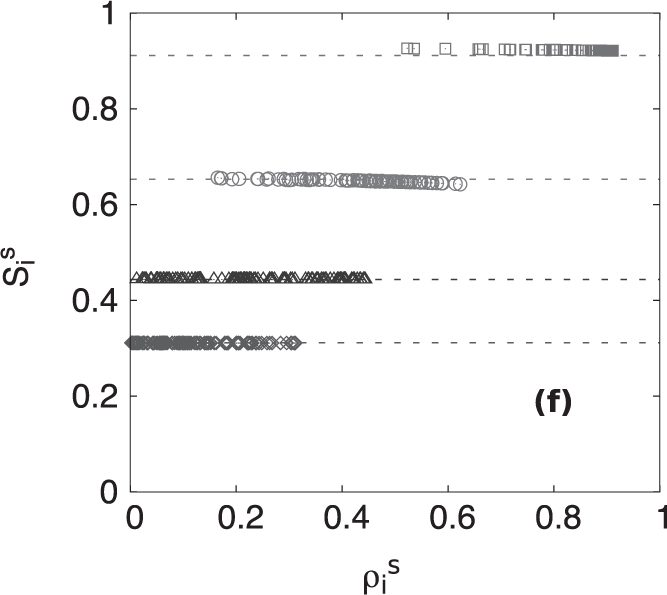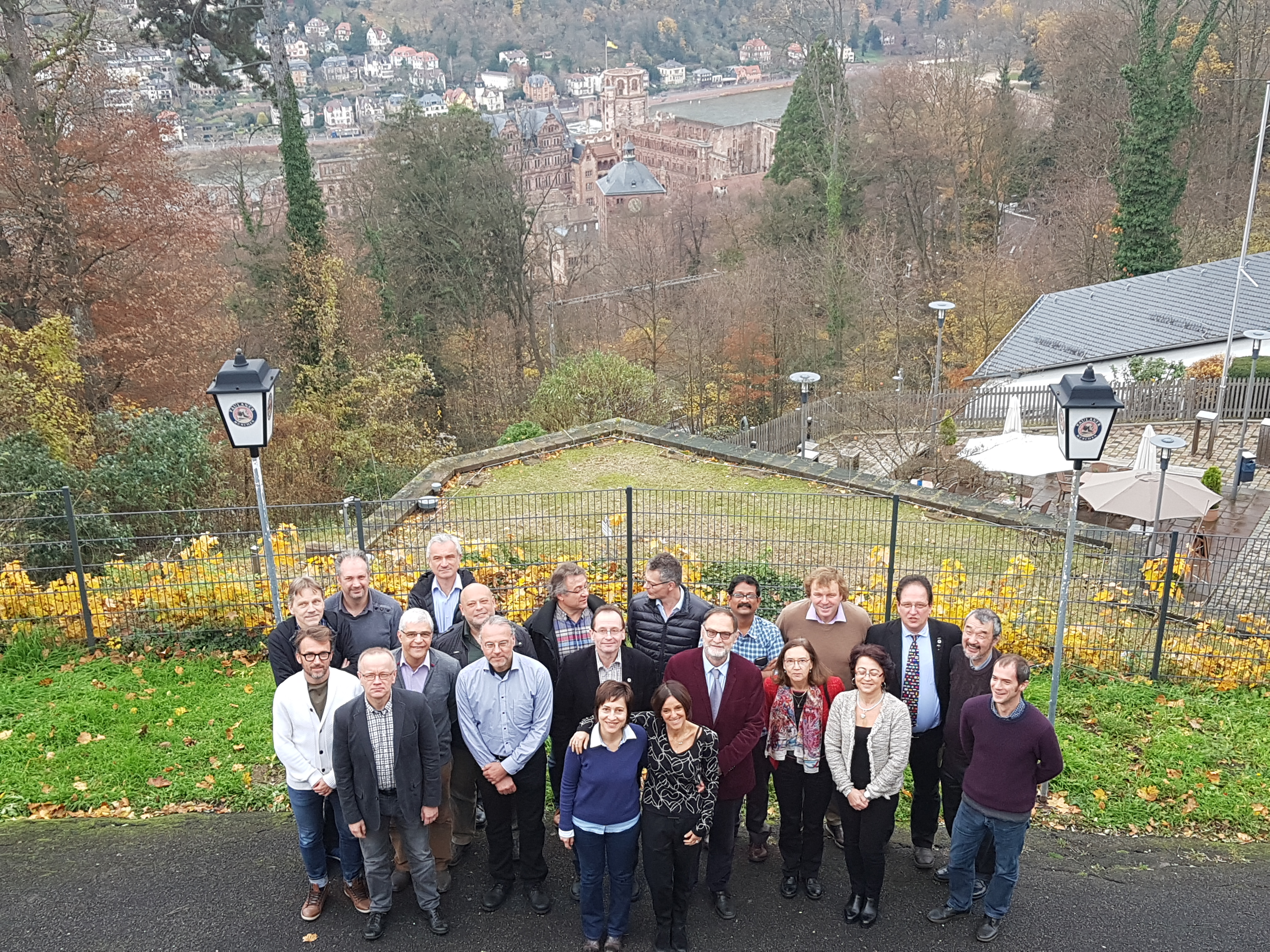News
EPJ E Highlight - Understanding the wetting of micro-textured surfaces can help give them new functionalities
- Details
- Published on 21 February 2018

New theoretical model explains experimental measurement of the friction of liquid droplets sliding on micro-structured surfaces
The wetting and adhesion characteristics of solid surfaces critically depend on their fine structures. However, until now, our understanding of exactly how the sliding behaviour of liquid droplets depends on surface microstructures has been limited. Now, physicists Shasha Qiao, Qunyang Li and Xi-Qiao Feng from Tsinghua University in Beijing, China have conducted experimental and theoretical studies on the friction of liquid droplets on micro-structured surfaces. In a paper published in EPJ E, the authors found that under the same solid fraction, friction on surfaces with a structure made up of micro-holes is much higher than that on surfaces patterned with an array of pillars. Such micro-structured surfaces have helped design new surfaces that mimic surfaces found in nature, such as self-cleaning surfaces, reduced-drag surfaces, surfaces capable of transporting liquids in microfluidic systems, variants with anti-icing or heat transfer properties, and even surfaces that facilitate oil-water separation.
EPJ D Highlight - Approximate quantum cloning: the new way of eavesdropping in quantum cryptography
- Details
- Published on 16 February 2018

New approximate cloning method avoids the previous limitations of quantum cloning to enhance quantum computing and quantum cryptography leaks
Cloning of quantum states is used for eavesdropping in quantum cryptography. It also has applications in quantum computation based on quantum information distribution. Uncertainty at the quantum scale makes exact cloning of quantum states impossible. Yet, they may be copied in an approximate way - with a certain level of probability - using a method called probabilistic quantum cloning, or PQC. In a new study published in EPJ D, Pinshu Rui from Anhui Xinhua and Anhui Universities, based in Hefei, China, and colleagues demonstrate that partial PQC of a given quantum state secretly chosen from a certain set of states, which can be expressed as the superposition of the other states, is possible.
EPJ Data Science Highlight - Urban form and socio-economics: what is the link?
- Details
- Published on 14 February 2018

Although urbanization has many advantages, one of its biggest drawbacks is the rise in socio-economic inequality. There have been some attempts at a qualitative analysis of the relationship between certain city features and social inequality, but these kinds of analyses are hard to replicate. A new research article published in EPJ Data Science proposes a new quantitative computer-based method for how to better understand the link between cites and social inequalities.
(Guest post by Alessandro Venerandi, originally published on the SpringerOpen blog)
EPJ Plus Highlight - Laser-ranged satellite measurement now accurately reflects Earth's tidal perturbations
- Details
- Published on 14 February 2018

The most precise ever laser satellite measurement method provides new clues to relativity
Tides on Earth have a far-reaching influence, including disturbing satellites’ measurements by affecting their motion. This disturbance can be studied using a model for the gravitational potential of the Earth, taking into account the fact that Earth’s shape is not spherical. The LAser RElativity Satellite (LARES), is the best ever relevant test particle to move in the Earth’s gravitational field. In a new study published in EPJ Plus, LARES proves its efficiency for high-precision probing of General Relativity and fundamental physics. By studying the Earth’s tidal perturbations acting on the LARES, Vahe Gurzadyan from the Center for Cosmology and Astrophysics at Yerevan State University, Armenia, and colleagues demonstrate the value of laser-range satellites for high-precision measurements.
EPJ Plus Focus Point - Highlights of Planetary Science in Italy
- Details
- Published on 13 February 2018

The papers published in this Focus Point evidence the broad range of interests pursued by the Italian community active in the field of Planetary Sciences.
Although this selection of papers can by no means be considered to exhaustively represent the fields of interest of the community, many points of interests and activities are included, from PI activitities in Planetary Space Missions, both from ESA and NASA programmes (such as Bepi Colombo and Juno) to the study of physical and dynamical properties of minor bodies to the geological study of planetary surfaces to the study of atmospheres to cosmogeophysical studies of meteorites.
The Italian Research Institutes, Observatories and Universities hosting research groups active in Planetary Sciences are based in different regional locations on the Italian territory as also shown by the selection of articles published in this Focus Point, and are evidence of a growing interest of the Astrophysical Community in Planetary Sciences and of a rapid growth in the number of topics investigated and in the number of scientists involved.
All articles are freely accessible until 30 April 2018. For further information read the Editorial.
EPJ C Highlight - Relativity Matters: Two opposing views of the magnetic force reconciled
- Details
- Published on 26 January 2018

How magnetic force acts on charged subatomic particles near the speed of light
Current textbooks often refer to the Lorentz-Maxwell force governed by the electric charge. But they rarely refer to the extension of that theory required to explain the magnetic force on a point particle. For elementary particles, such as muons or neutrinos, the magnetic force applied to such charges is unique and immutable. However, unlike the electric charge, the magnetic force strength is not quantised. For the magnetic force to act on them, the magnetic field has to be inhomogeneous. Hence this force is more difficult to understand in the context of particles whose speed is near the speed of light. Moreover, our understanding of how a point-particle carrying a charge moves in presence of an inhomogenous magnetic field relied until now on two theories that were believed to differ. The first stems from William Gilbert's study of elementary magnetism in 16th century, while the second relies on André-Marie Ampère electric currents. In a new study just published in EPJ C, the authors Johann Rafelski and colleagues from the University of Arizona, USA, succeeded in resolving this ambiguity between Ameperian and Gilbertian forms of magnetic force. Their solution makes it possible to characterise the interaction of particles whose speed is close to the speed of light in the presence of inhomogeneous electromagnetic fields.
EPJ B Highlight - Predicting influencers has just been made simpler
- Details
- Published on 26 January 2018

Understanding the dynamics of message transmission in networks leads to identification of key individuals spreading news and viruses in epidemics
Social networks, such as Twitter, thrive on key influencers spreading news. Like information, epidemics also spread from key individuals. To identify the most influential actors in such networks, many studies have, until now, focused on ranking the influence of individual nodes. But these methods are not accurate enough to single out influential spreaders because they fail to take into account the spreading dynamics. Now, Byungjoon Min from the Institute of Interdisciplinary Physics and Complex Systems, Balearic Island University, Palma de Mallorca, Spain, has calculated for the first time the expected size of epidemic outbreaks when spreading originates from a single seed. In a study published in EPJ B, Min accurately predicts the influence of spreaders in such networks. Applications include viral marketing, efficient immunisation strategies, and identifying the most influential actors in our society.
Welcoming Prof. Kai Bongs as new Editor-in-Chief of EPJ Quantum Technology
- Details
- Published on 26 January 2018

It is with great pleasure that we announce that Professor Kai Bongs from the University of Birmingham, UK, has been appointed Editor-in-Chief of EPJ Quantum Technology.
Prof. Bongs is the director of the UK National Quantum Technology Hub in Sensors and Metrology, a consortium of researchers from 11 universities, NPL and over 120 companies, which focuses in translating quantum science enabled precision measurements with cold atoms into technology and economic benefit. He has been working in the field of cold atoms for over 20 years. After studying Physics up to his PhD in the group of Prof. Wolfgang Ertmer at the University of Hannover and a postdoctoral appointment on atom interferometry in the group of Mark Kasevich at Yale University, he did his Habilitation on quantum gas mixtures working with Prof. Klaus Sengstock at the University of Hamburg. Since 2007 he holds a chair at the University of Birmingham heading the group of quantum matter and directing the Birmingham part of the Midlands Ultracold Atom Research Centre, MUARC. His research achievements have been recognised by a Royal Society Wolfson Research Merit Award.
Prof. Bongs takes on this position after the founding Editor, Prof. Gerard Milburn stepped down at the end of 2017. We take this opportunity to show our gratitude to Prof. Milburn for his role in bringing EPJ Quantum Technology to life and for his hard work and leadership in the past four years.
EPJ E Colloquium - A unified description of colloidal thermophoresis
- Details
- Published on 23 January 2018

When colloidal particles find themselves in a temperature gradient they move in response to it, in some cases toward the hotter some toward the cooler side, depending on the specific physical chemistry of the colloid and the solvent surrounding it. This process, called thermophoresis, is generally regarded as a phoretic phenomenon: the thermal motion of a colloid is mainly driven by local hydrodynamic stresses in the surrounding liquid. However a complete and unique theoretical description of thermophoresis has been lacking.
EPJ A - New Structure of the Editorial Board and Editor-in-Chief Appointments
- Details
- Published on 19 January 2018

EPJ is pleased to announce significant changes concerning the editorial structure of EPJ A. Following the continuous growth and broadening of the journal’s scope over the past few years, the theory section has now been divided into Theory I (Nuclear Physics) and Theory II (Hadron Physics and Quark Matter). Theory I is headed by Prof. Thomas Duguet, who has been newly appointed for this position, while Theory II continues to be headed by Prof. Tamás Biró. Further, and with immediate effect, Prof. Maria Jose Garcia Borge has been appointed Editor-in-Chief for the Experimental Physics section of the journal.




